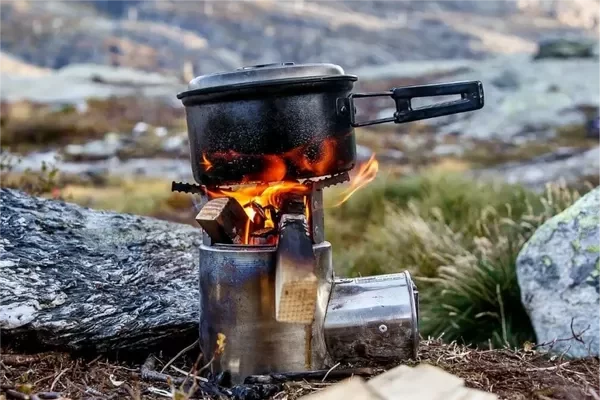In the realm of outdoor cooking and survival techniques, the hobo stove stands as a testament to simplicity and resourcefulness. This versatile cooking device has a rich history rooted in ingenuity and necessity. Let’s delve into the world of the hobo stove, exploring its origins, construction, uses, and modern adaptations.
Origins and Evolution
The term “hobo stove” traces its roots back to the transient communities of the early 20th century. Hobos, or itinerant workers, often traveled vast distances seeking employment during times of economic hardship. To cook their meals while on the road, hobos would fashion makeshift stoves from readily available materials. These early stoves were crafted from tin cans, metal buckets, or other salvaged items, allowing for efficient cooking using minimal resources.
Over time, the concept of the hobo stove has evolved and expanded beyond its original context. Today, outdoor enthusiasts, survivalists, and campers embrace the hobo stove for its portability and simplicity. The modern hobo stove is designed with efficiency in mind, often incorporating features that optimize fuel consumption and heat distribution.
Construction and Components
The construction of a hobo stove is refreshingly straightforward, relying on basic materials that are easily sourced. The primary components typically include:
1. Base: This forms the foundation of the stove and provides stability. Common materials for the base include large tin cans, coffee cans, or even discarded metal containers.
2. Fuel Chamber: Positioned inside the stove, the fuel chamber holds the combustible material. This can be as simple as adding twigs, small sticks, or charcoal.
3. Ventilation Openings: Adequate airflow is crucial for efficient combustion. Ventilation holes or slots are strategically placed to facilitate air intake and promote steady burning.
4. Cooking Surface: The top of the stove serves as the cooking area. Depending on the design, a grate or wire mesh can be used to support pots and pans.
5. Handles or Stands: Optional features for convenience, handles or stands can be added to facilitate transportation and placement of the stove.
How Does a Hobo Stove Work?
The operating principle of a hobo stove is elegantly simple. Once assembled and fueled, the stove harnesses heat from the burning material inside the fuel chamber. The ventilation openings allow oxygen to enter, sustaining combustion and generating a steady flame.
As the fire burns, the stove’s cooking surface gradually heats up, enabling outdoor chefs to prepare meals using a variety of cooking techniques. From boiling water for hot beverages to cooking hearty meals over an open flame, the hobo stove offers a versatile platform for culinary creativity in the wilderness.
Practical Applications and Uses
The appeal of the hobo stove lies in its versatility and adaptability to various outdoor scenarios. Here are some practical applications where the hobo stove excels:
1. Camping: Lightweight and compact, hobo stoves are ideal for campers looking to minimize gear without sacrificing cooking capability. They can be used to prepare breakfast, lunch, and dinner, utilizing natural materials found in the surrounding environment.
2. Survival Situations: In emergency situations or survival scenarios, a hobo stove can be a lifesaver. With minimal resources, one can quickly fashion a functional cooking device to boil water, cook food, and maintain warmth.
3. Backpacking and Hiking: For backpackers and hikers, carrying a portable stove can be burdensome. A hobo stove offers a lightweight alternative, allowing for hot meals without the need for bulky equipment.
Modern Innovations and Variations
In recent years, the resurgence of interest in outdoor activities and sustainable living has spurred innovations in hobo stove design. Today, enthusiasts can choose from a range of commercially available hobo stoves that feature enhanced functionality and durability.
1. Foldable Stoves: Some modern hobo stoves are designed to be collapsible, making them incredibly portable and easy to store. These stoves are crafted from lightweight materials like titanium or stainless steel, striking a balance between durability and weight.
2. Integrated Wind Shields: To improve efficiency in windy conditions, certain hobo stove models incorporate built-in wind shields. These shields help to protect the flame from gusts of wind, ensuring a steady heat source for cooking.
3. Multi-Fuel Compatibility: Advanced hobo stoves are engineered to burn various types of fuels, including wood, alcohol, and solidified fuels. This flexibility allows users to adapt to different environments and fuel availability.
Conclusion
In conclusion, the hobo stove embodies the spirit of resourcefulness and adaptability. From its humble origins as a survival tool for itinerant workers to its modern-day incarnations designed for outdoor enthusiasts, the hobo stove remains a testament to the enduring appeal of simple solutions in complex environments.
Whether you’re a seasoned camper or an amateur explorer, consider adding a hobo stove to your outdoor cooking repertoire. Embrace the simplicity of a stove that relies on basic principles of combustion and craftsmanship. The hobo stove is more than a cooking device; it’s a symbol of ingenuity that connects us to the timeless art of cooking over an open flame in the great outdoors.

